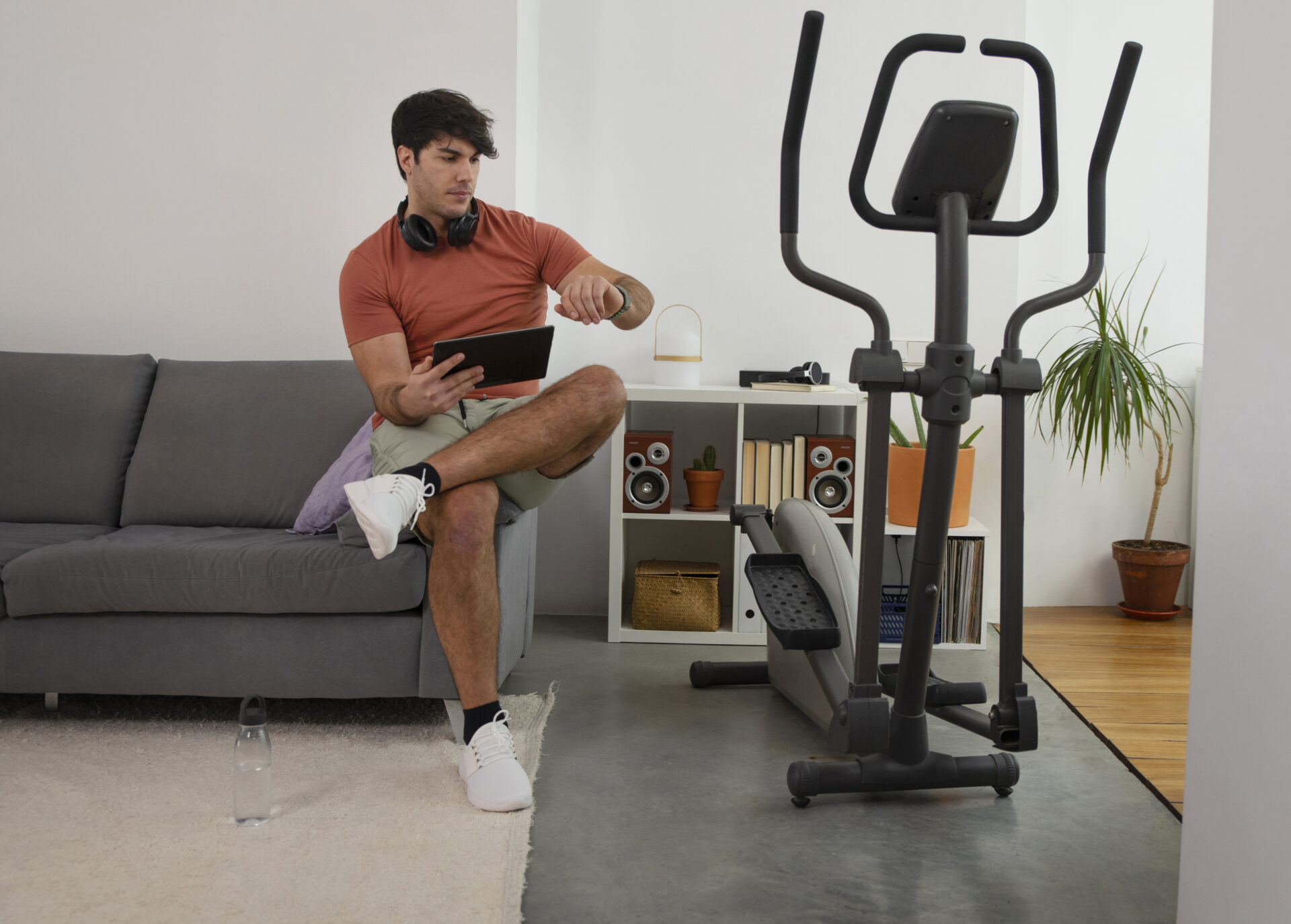In today’s world, most people complain that they do not have time for fitness and think that it is a luxury they cannot afford. However, what if there was a way to squeeze strength, endurance, and overall health all in one sitting inside the comfort of your own home? Truly possible with home workout plans without equipment. It relies solely on body weight to create very effective exercises targeting every muscle group. If you are either just getting started on your first few steps into the realm of fitness or are in need of a refreshing diversion from your current routine, bodyweight circuits are simple yet efficient means to keep oneself active.
Total flexibility. No fancy machines or gym membership. Just you and a little space in your home. Studies and experts agree: if done right and consistently, bodyweight training gives results like traditional exercises. That means burning fat, building lean muscle, and better well-being. This article covers the benefits, sample plans, and key strategies like progress tracking, injury prevention, and motivation boosts to keep you on track for a stronger, healthier life.
The Benefits of No-Equipment Home Workouts
A home workout is a very convenient and inexpensive way of working out, saving travel time and costs, so you can do it morning or evening without the trouble of going to the gym. One can easily schedule it at their own convenience, hence fitting well into a busy schedule while trying to keep up with set goals.
Next, these plans work well for total-body involvement. In bodyweight circuits, you do moves that work many muscle groups at once. This greatly improves strength as well as flexibility. Studies have shown that it increases bone mass and also helps avoid weak bones while being healthy for the heart too. Along with this comes the building up of endurance which lets you do daily work with energy.
The most significant advantage is, of course, privacy. Nobody watching you and being able to exercise at your own pace inside your own home or in a place where you feel welcomed boosts consistency of performing the workout that one will actually tend to stick with. Lastly, no equipment plan is friendly to beginners up to advanced users ensuring continued progress without hitting a plateau.
They give gym-like results, plus better focus and mood from feel-good chemicals. Regular activity helps control weight, lowers heart disease risk, cuts stroke chances, reduces type 2 diabetes, eases depression and anxiety, and fights some cancers. Just 30 minutes a day makes a difference. Plans fit any body and fitness level. Housework counts too, but a solid plan keeps you going.
Getting Started: Essentials for Success
Pick clothes that aren’t too tight, so you can move freely. Go for breathable fabrics and supportive shoes if you want. Drink plenty of fluids and be sure your water is within easy reach. A brisk sample warm-up: march in place for 5-10 minutes, arm circles, gentle stretching to begin to ready your muscles and joints.
Above all, listen to your body. Introduce it slowly if you are a beginner, and if you have any health concerns, your doctor should always be consulted. With these essentials, you are ready to go and try out the bodyweight circuits that will really push and change you.
Sample No-Equipment Workout Plans
The basic foundation of these plans is a bodyweight circuit. A circuit is a series of exercises performed back-to-back with little or no rest between them, done energetically to build strength as well as cardio. We have three levels: beginner, intermediate, and advanced. Do each exercise for 30 seconds, rest is just the time it takes to switch between exercises. Repeat the circuit 3 times. Do this 3-4 days per week with a rest day between rest days.
Beginner Bodyweight Circuit
For beginners, stick to the basics to ingrain the right form and build confidence. Perform each one for 30-45 seconds, with a rest of 15-20 seconds between rounds, and repeat for two to three rounds. Make it slow and nail the form down
| Exercise | Description | Target Areas |
| Wall Push-Ups | Face the wall, hands at shoulder width. Bend elbows to lean in, then push back. | Chest, shoulders, arms |
| Bodyweight Squats | Feet shoulder width apart, lower as if sitting in a chair. Then push through heels to stand. Make sure knees are behind toes. | Legs, glutes, core |
| Seated Leg Lifts | Sit on the floor, hands on the floor behind you for support. Lean back slightly. One leg at a time lifts. | Core, hips |
| March in Place | Run in place. High knees. Arms swing like you are running. | Cardio, full body |
| Arm Circles | Arms straight out to the sides. Small circles forward. Small circles backward. | Shoulders, upper back |
This bodyweight circuit will ease you into bodyweight circuits and makes it easy to target the burn without getting overwhelmed. Repeat this a week and you’ll see fast gains.
Intermediate Bodyweight Circuit
Step up to this level once you have a good handle on the basics. Execute each exercise for 45-60 seconds, rest for 10-15 seconds, and shoot for 3-4 rounds. This will add that extra boost to even out muscle growth.
| Exercise | Description | Target Areas |
| Standard Push-Ups | From plank, lower chest to floor, press up. (Can do on knees) | Chest, triceps, core |
| Lunges | Step forward, lower until both knees are at 90 degrees, alternate legs. | Legs, balance |
| Plank Hold | Forearms on ground, body straight like a board. Hold it—core engaged. | Core, full-body stability |
| Jumping Jacks | Jump feet wide while clapping overhead then return. | Cardio, coordination |
| Superman Holds | Lie face down. Lift arms and legs off the ground. | Back, glutes |
These middle-level circuits build power and endurance, getting tougher step by step. They mix things up to fight routine boredom and help you keep improving.
Advanced Bodyweight Circuit
For those wanting a real challenge, this plan builds control and stamina: 60 seconds per exercise, short rests, 4 rounds. It sparks high-intensity training for solid results.
| Exercise | Description | Target Areas |
| Diamond Push-Ups | Hands close under the chest in diamond shape, lower and push. | Triceps, inner chest |
| Pistol Squats | Stand on one leg, lower into squat, alternate. Use support if starting. | Legs, balance, core |
| Side Plank | On one forearm, lift hips, stack feet, hold and switch. | Obliques, shoulders |
| Burpees | Squat, jump back to plank, push-up, jump up. | Full body, cardio |
| Mountain Climbers | In plank position, drive both knees in quickly. | Core, legs, speed |
Advanced bodyweight circuits really push your limits for explosive strength—and you keep those gains right at home. Cycle these plans to avoid routine boredom. Always follow with some restorative stretches.
Incorporating Progress Tracking
Progress tracking is very important in home workouts without equipment; it will ensure that you know what you are doing, how well you are doing it, and when to increase the intensity of your workout. Its absence could allow motivation to wane but simple methods can easily be maintained to keep one accountable.
Log your reps and sets, plus how you feel after. Track weekly totals, like push-up numbers or plank holds, to spot trends—say, if squats improve faster than planks.
Keep notes in a notebook or phone app. Log details and measure your body monthly, like waist or arms, for small shifts. Take pictures every four weeks for visual evidence.
Mini goals you can set may be to increase your holds by 10 seconds. Review progress bi-weekly so that you can celebrate wins. This turns the bodyweight circuits into a measurable journey and thus steady advancement.
Remember, progress tracking is not about being perfect; it is about being consistent. It helps build a positive feedback loop so that every workout becomes more rewarding.
Injury Prevention Strategies
Safety tops any fitness plan, especially bodyweight ones, to prevent injury prevention, cut risks, and keep you going long-term. Most problems come from bad form, so focus on technique.
Warm up with dynamic moves like leg swings, arm swings, and torso twists to get blood flowing. Cool down with static stretches for flexibility.
Keep knees over toes in squats; hold a straight line in push-ups. Breathe in control- let out breath when exerting. If pain persists beyond general tiredness, just stop and rest for a while.
Build up slowly. Mix high-intensity bodyweight circuits with easy days for recovery. Add work for other muscles, like core exercises for back support.
Drink plenty of water and eat well. Get enough sleep to help recovery. Watch your body’s signals: mild soreness is fine, but sharp pain means stop right away. With these practices, injury prevention turns into an instinct and you have fun doing your workouts.
Motivation Boosts to Stay Consistent
Keeping up home workouts takes more than plans; find ways to stay inspired. Schedule sessions first thing, like mornings when you have energy.
Mix up your routines: Throw bodyweight circuits and yoga or walks in so you never get sick of them. Make playlists of upbeat music to energize sessions.
After a solid week, treat yourself to something fun, like a book. Check in online with a buddy to share progress tracking—it pulls in more support. Picture your goal and the stronger, more energetic you. On off days, just commit to 5 minutes to get going.
Celebrating wins beyond the scale like better sleep or a good mood. Let motivation boosts make exercise something you look forward to, not a task.
Conclusion
Workouts at home without equipment will unlock a gateway to fitness for life with zero excuses. Results come from staying consistent and working smart-all the way from beginner bodyweight circuits up to advanced challenges. Progress tracking, injury prevention, and motivation boosts from any source can make a way for healthy living.




